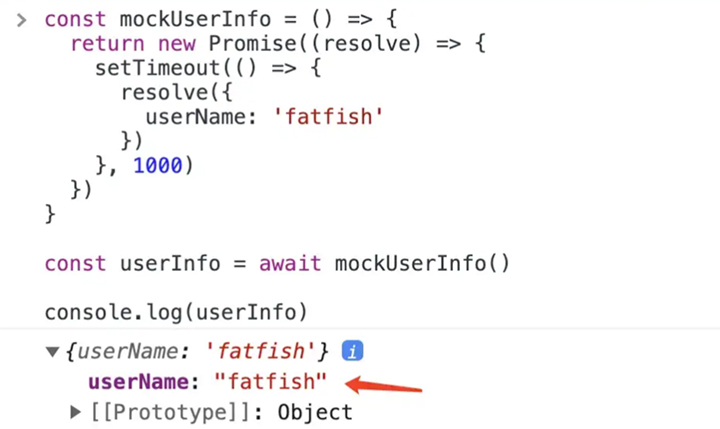您应该了解的 5 个最令人兴奋的 ES2022 功能
·ECMAScript 2022· 已经发布 2 个多月了,它为我们带来了很多令人兴奋的新特性(如果你用过就会知道)。
这些新特性很棒,有的可以优化我们的代码,有的可以提高编码质量。 朋友,你还在等什么? 让我们来看看!
1. 数组的“.at()”方法
你如何读取数组的尾部元素? 是的,我们需要以 array.length - 1 作为下标来读取。
const array = [ 1, 2, 3, 4, 5 ]
const lastEle = array[ array.length - 1 ] // 5
// 你不能那样读取
const lastEle = array[ - 1 ] // undefined
还有别的办法吗?
ES2022 提供了一个数组方法 at,可能是一个小小的改动,但是可以大大提高代码的可读性。
at方法可以取正数或负数,这将决定它是从数组的头部还是尾部开始读取元素。
const array = [ 1, 2, 3, 4, 5 ]
const lastEle = array.at(-1) // 5
const firstEle = array.at(0) // 1
2.Top-level await
朋友们,你们喜欢使用 await 吗? 我真的很喜欢它,因为它使编写异步代码对我来说显得更加优雅和直观。
// Old Style
const getUserInfoOld = () => {
return fetch('/getUserId')
.then((userId) => {
return fetch('/getUserInfo', { body: JSON.stringify({ userId }) })
.then((userInfo) => {
return userInfo
})
})
}
// await Style
const getUserInfo = async () => {
const userId = await fetch('/getUserId')
const userInfo = await fetch('/getUserInfo', {
body: JSON.stringify({ userId })
})
return userInfo
}
await 是一个很棒的机制,过去只能封装在 async 函数中。 随着 ES2022 的发布,我们也可以在 async 函数之外使用它了。
const mockUserInfo = () => {
return new Promise((resolve) => {
setTimeout(() => {
resolve({
userName: 'fatfish'
})
}, 1000)
})
}
const userInfo = await mockUserInfo()
// Can we print out { userName: 'fatfish' } please?
console.log(userInfo)

这个功能很棒,可以让我们做很多过去做不到的事情。
动态加载模块
const enStrings = await import(`/i18n/en`)
初始化数据库
const connection = await connectDB()
有条件地渲染模块
const showBlackTheme = window.location.search.includes('theme=black')
if (showBlackTheme) {
await import('/theme/black.js')
} else {
await import('/theme/white.js')
}
3. Object.hasOwn
我们经常需要知道对象上是否存在某个属性,并使用 in 运算符或 obj.hasOwnProperty 来这样做。 但是他们都有一些缺陷,让我们来看看。
“in”运算符
如果指定的属性在指定的对象或其原型链中,则 in-operator 返回 true。
const Person = function (age) {
this.age = age
}
Person.prototype.name = 'fatfish'
const p1 = new Person(24)
console.log('age' in p1) // true
console.log('name' in p1) // true pay attention here
obj.hasOwnProperty
hasOwnProperty 方法返回一个布尔值,指示对象是否具有指定的属性作为其自身的属性(而不是继承它)。
const Person = function (age) {
this.age = age
}
Person.prototype.name = 'fatfish'
const p1 = new Person(24)
console.log(p1.hasOwnProperty('age')) // true
console.log(p1.hasOwnProperty('name')) // fasle pay attention here
也许 obj.hasOwnProperty 已经可以过滤掉原型链上的属性,但在某些情况下,它并不安全,会导致程序失败。
Object.create(null).hasOwnProperty('name')
// Uncaught TypeError: Object.create(...).hasOwnProperty is not a function
Object.hasOwn
不用担心,我们可以使用Object.hasOwn来规避这两个问题,比obj.hasOwnProperty方法更方便、更安全。
let object = { age: 24 }
Object.hasOwn(object, 'age') // true
let object2 = Object.create({ age: 24 })
Object.hasOwn(object2, 'age') // false The 'age' attribute exists on the prototype
let object3 = Object.create(null)
Object.hasOwn(object3, 'age') // false an object that does not inherit from "Object.prototype"
4 私有属性和方法
以前我们用 _ 来表示私有属性,但是不安全,仍然有可能被外部修改。
class Person {
constructor (name) {
this._money = 1
this.name = name
}
get money () {
return this._money
}
set money (money) {
this._money = money
}
showMoney () {
console.log(this._money)
}
}
const p1 = new Person('fatfish')
console.log(p1.money) // 1
console.log(p1._money) // 1
p1._money = 2 // 从外部修改私有属性 _money
console.log(p1.money) // 2
console.log(p1._money) // 2
我们可以使用 # 来实现真正安全的私有属性
class Person {
#money=1
constructor (name) {
this.name = name
}
get money () {
return this.#money
}
set money (money) {
this.#money = money
}
showMoney () {
console.log(this.#money)
}
}
const p1 = new Person('fatfish')
console.log(p1.money) // 1
// p1.#money = 2 // We cannot modify #money in this way
p1.money = 2
console.log(p1.money) // 2
console.log(p1.#money) // Uncaught SyntaxError: Private field '#money' must be declared in an enclosing class
5. 错误原因
在 ES2022 规范中,new Error() 可以指定其错误的原因。
const readFiles = (filePaths) => {
return filePaths.map(
(filePath) => {
try {
// ···
} catch (error) {
throw new Error(
`${filePath} erroe`,
{cause: error}
)
}
})
}
有时,代码块的错误需要根据其原因进行不同的处理,但错误的原因相对相似,因此能够为它们分配错误名称是很好的。
相关文章
ES2022 有什么新功能? 4 个最新的 JavaScript 功能
发布时间:2022/08/08 浏览次数:267 分类:JavaScript
-
新的 ES13 规范终于发布了。 JavaScript 确实不是一种开源语言。 它是一种遵循 ECMAScript 标准规范编写的语言。 TC39 委员会负责讨论和批准新功能。 他们是谁?

